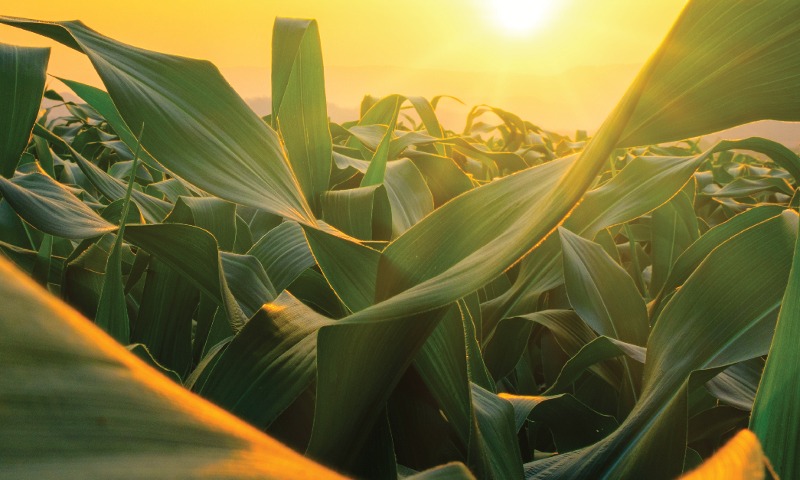Primary Focus for Newly Formed Mosaic Biosciences Is Enhancing Nutrient Use Efficiency
In August, The Mosaic Co. announced the addition of a biosciences platform to enhance its offerings for the ag community and deliver cutting edge biological solutions backed by science and sound research.
“Biologicals are a dynamic field, with lots to discover and explore, and it’s part of what excites me about working in biologicals,” says Matt Sowder, Director of Field Solutions for the new entity, Mosaic Biosciences. “It gives us an opportunity to say we are really exploring the frontier, trying to drive crop production in a way that hasn’t been done.”
While it might bring new offerings from Mosaic, it meshes with the company’s mission, says Ross Bender, Director for New Product Development.
“Our mission at Mosaic is to help the world grow the food it needs,” he says. “Agriculture has evolved a lot over the last few decades. And how we manage crop nutrition is evolving as well. What we have learned through a lot of science and a lot of R&D is that there are new ways that we can manage crop nutrition to improve the efficiency, the effectiveness of it.”
Long focused on crop nutrition, the addition of a biological portfolio is a logical progression, Sowder says.
“It’s about the idea that can we drive crop nutrition beyond the bounds of traditional crop nutrition,” he says. “And the way we would do that is the addition of biological products to enhance nutrient use efficiency. Mosaic has long been the leader in promoting balanced crop nutrition to meet season long crop needs. The addition of biological products to improve nutrient use efficiency is really a line extension of where they’ve been and where the industry needs to go.”
And there are plenty of places for the industry to go and grow. The biological space is one of the fastest growing segments in ag, with one estimate putting the market at about $30 billion by 2029. There is so much opportunity, in fact, Sowder doesn’t look at other companies as competitors.
“Historically, the biological space simply hasn’t congealed,” Sowder says. “The number one competitor in this space is non-use. Growers want transparency and trust in proven products that can be scaled across production environments; we intend to provide that level of confidence at Mosaic Biosciences.”
While the announcement for Mosaic Biosciences came came in mid-August, plans for the change can be traced back to at least early 2022 when Mosaic acquired Research Triangle Park, NC-based Plant Response, a provider of biological-based solutions for agriculture.
“That enabled us to really put a beachhead in the biological space,” Sowder says. “This is really a focal point in a platform by which we will continue to research, continue to develop and continue to introduce the appropriate products for customers to make the most of their crop nutrition.
“What we have today is simply the beginning,” Sowder continues. “As we explore additional technologies, as we bring new products to the market, those additions will come through Mosaic Biosciences.”
Given that a teaspoon of soil contains something like 50,000 different bacteria — some beneficial and others not so much, Mosaic Biosciences will work to develop solutions that support plant health and growth.
“We are looking to really harness the power of those types of species that include nutrient use enhancers,” Bender says. “So, how can we enhance and extract more value from what exists in the soil already, or what we’re applying and use that to optimize the potential yield.
“The second area that we are focusing on includes biostimulants,” he continues. “In other words, how do we mitigate some of the different types of stresses that crop would typically experience like drought, heat, salinity, etc.”
Bender explains just one of the challenges for the broader biological space moving forward. In any given real-world scenario: “The soil has a chemical property; there are physical properties; there are biological properties. And then the fourth thing that each soil experiences — weather.
“When you partner chemistry, physical and biological properties with weather there are an infinite number of combinations of experiences that a cropping system will encounter. There is no way to predict how a technology will perform in every scenario, but we’ve developed a suite of lab, greenhouse, and field trial approaches to give us the confidence we need to bring sound solutions to the market.”
That said, Bender agrees that now is the right time to invest in the biological arena.
We’re really excited about that,” he says. “It’s a new area. While it’s a tough science, we’re excited about this for the retailer and for the farmer, on how we can develop new technologies to maximize the efficiency of this pretty large investment that farmers make in fertilizer.”
Despite advances in fertilizer technology, no applications of crop nutrition result in 100% use or perfect efficiency. The creation of Mosaic Biosciences will help the company deliver continued improvements in nutrient use efficiency, which comes in three parts — availability, uptake, and utilization.
“To enable improved nutrient use efficiency is what I think most of the world’s looking at in biologicals,” Sowder says. “And the primary focus for Mosaic Biosciences happens to be the nutrient use efficiency angle.”






